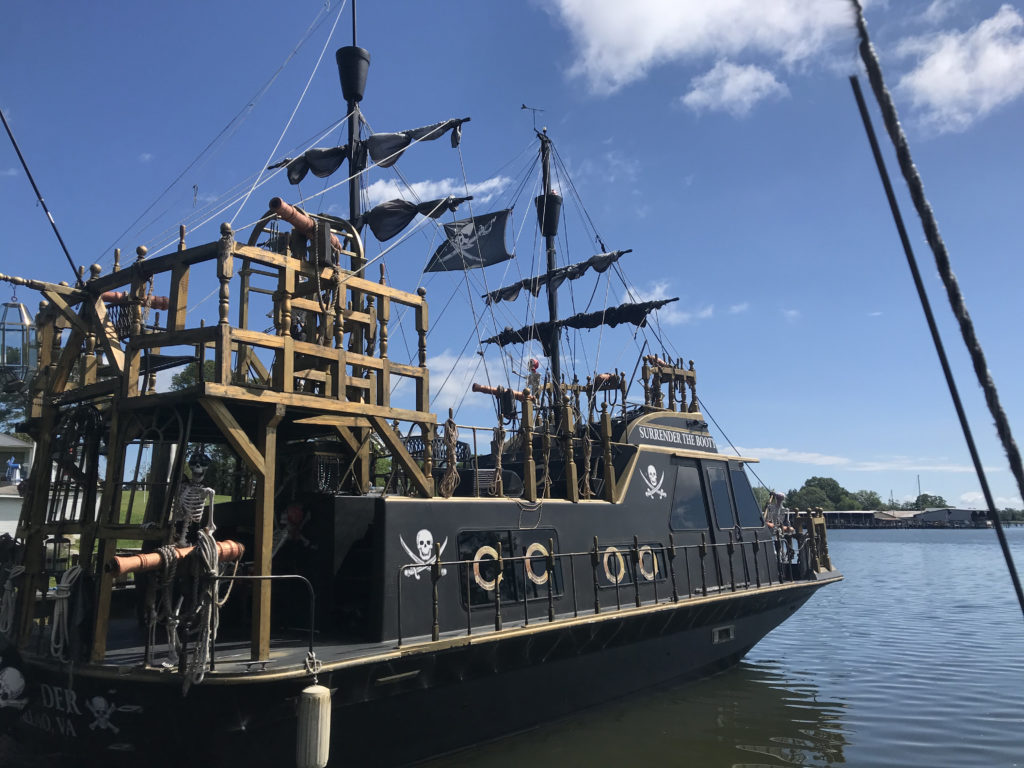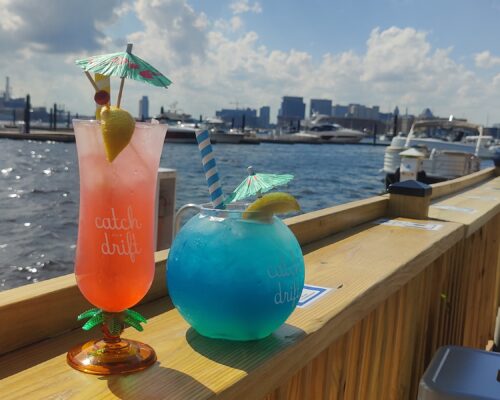Abandoned fiberglass boats never fade away.
Dan Corder, a retired firefighter on Virginia’s Northern Neck, is giving abandoned boats a second chance by transforming them into pirate-themed spectacles. His eclectic hobby started when his neighbor was planning to get rid of a boat that “sank more than it floated,” and Corder offered to take it instead. “I towed it over to my dock and that evening, after I think my third bourbon, I looked at it and I said, you know what, we can put some lipstick on a pig here… I literally turned this thing into the most gaudy-looking pirate ship that you have ever seen,” he says. That first project became such a legend that someone offered him $10,000 for it.
Corder, currently working on his 33rd pirate ship, has sold his transformed boats to nonprofits, charters, and even Disney, although money isn’t his motivation. “Usually if I’m lucky I will break even,” he explains. “I just hate to see these things end up in the landfill.”
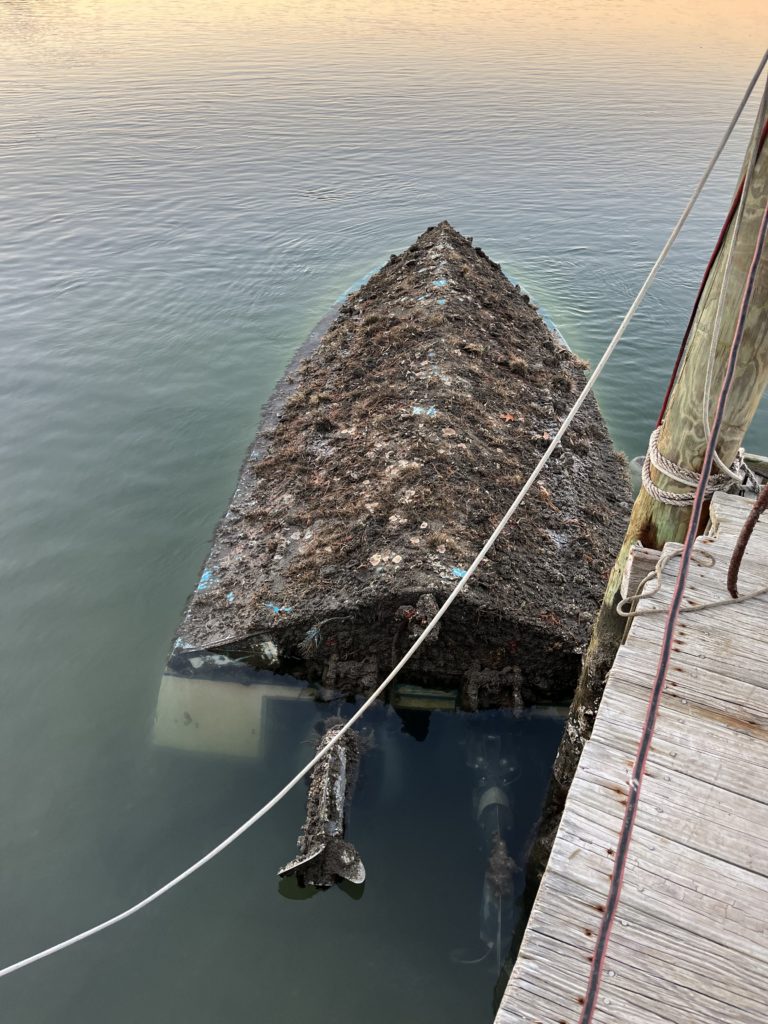
Photo courtesy of Vessel Disposal and Reuse Foundation/Mike Provost
It may be difficult for non-boaters to imagine allowing a boat to deteriorate extensively or abandoning it altogether. Boat owners, however, usually understand how it happens. Corder compares boat ownership to relationships: “It’s enchanting, and then reality sets in.”
Maintenance is no joke, and catching up on missed maintenance is even harder—it usually takes Corder a year to revitalize each of his pirate ships. I restored an essentially abandoned boat a few years ago, and that took a year and the equivalent of a semester of college tuition. Even then, the only reason my boat could be revived at all is because she’s steel, so the hull was still sound. Most recreational boats are fiberglass.
Large-scale production of fiberglass boats took off in the 1960s and 70s. They’re cheap and efficient to produce, have an excellent strength to weight ratio, and are much easier to maintain than wood. But stress cracking can develop around critical points, and many fiberglass boats have balsa wood-cored decks that will rot if water intrudes. Even the best maintained fiberglass boats often degrade beyond reasonable repair after 40 or 50 years. Since the first wave of fiberglass boats was produced about 50 years ago, their time is up.
Unlike cars and other vehicles made of metal that can be scrapped, fiberglass is not recyclable. Its strength comes from its structure and long fibers, so it can’t be crushed up and reformed into something new without losing all its desirable qualities. Although there are efforts to burn crushed fiberglass as an alternative fuel for cement production, these programs are still in the pilot phases. Because the value can’t be recouped, it currently costs more to dispose of an old fiberglass boat than the boat is worth. Considering hazardous materials, demolition and landfill fees, owners of older vessels might seek alternative, and often illegal, disposal options. “Unfortunately,” says Corder, “what happens down here a lot, is the unwilling victim ends up being the marina” where the boat got left behind.
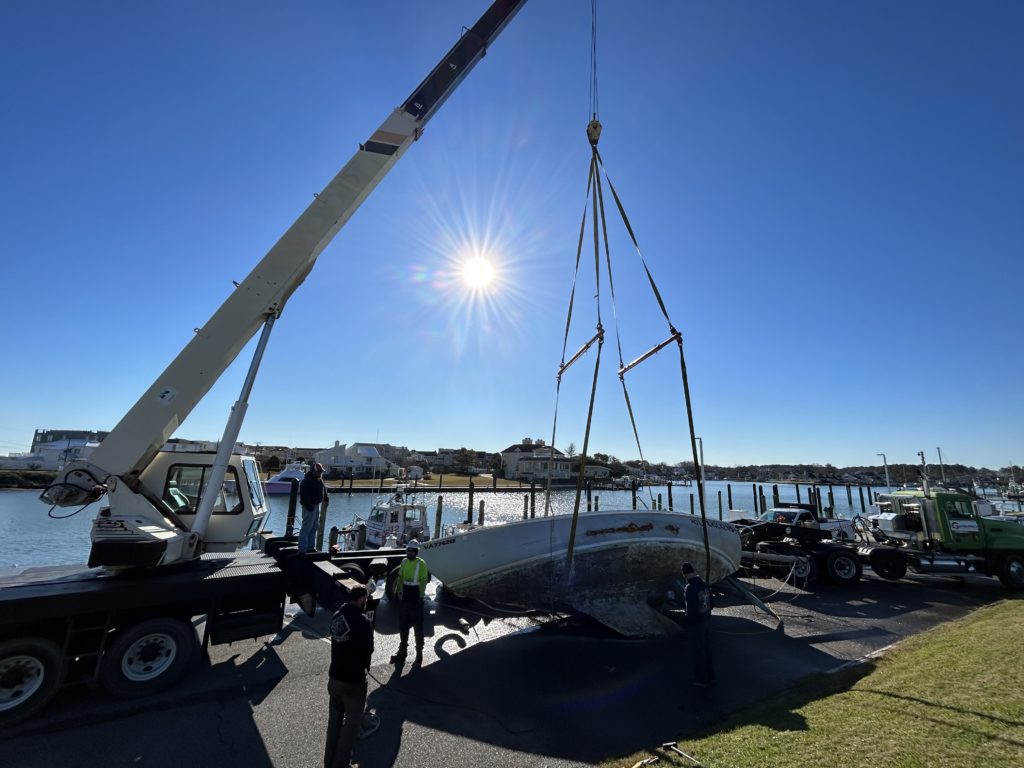
Photo courtesy of Vessel Disposal and Reuse Foundation/Mike Provost
LaNika Jackson, manager of Willoughby Harbor Marina in Norfolk, reports that abandoned vessels have been problematic for them. Sometimes customers will bring boats in, pay the initial slip fees, and vanish. “It’s a pain,” she adds. “There’s no way for marinas to actually go after the customer and have them take responsibility… half the time the boat in question is not even registered to the person who we last knew to own the boat, it’s registered to someone four owners ago.” Besides being a logistical challenge, the expense also falls on the marina: “Depending on who you contract with, it can cost anywhere between $70 per foot up to $150 per foot to get the boat removed from the marina and disposed of,” Jackson says. “That’s money that we could be using to make improvements in other areas of the marina, but instead we have to use it to remove a boat that we don’t even own.”
Some boats are left in marinas like Willoughby Harbor. Others are blown out to sea by rough weather and aren’t sought after by their owners, while others sink in their slips due to lack of maintenance. Some are set adrift, deliberately sunk, or tied up in a remote marsh, often with registrations removed. Regardless of where a boat is abandoned or where it ends up, it becomes marine debris, and a hazard to people and the environment.
Robin Dunbar, director of education at the Elizabeth River Project and a PhD student focusing on marine debris, says that the materials from abandoned boats can entangle or be ingested by animals, damage habitat, and pose a hazard to navigation. “If something becomes abandoned or adrift, it ends up smothering the wetlands, or damaging them, or crushing bird nests.” They may also leak contaminants, such as fuel, oil, paints, and sewage, and become a source of microplastics, since fiberglass is a plastic composite. Boaters might collide with submerged vessels they can’t see, and stray lines from rigging or fishing gear may foul propellers, endangering those aboard.
Given these threats, many coastal states have programs to deal with what they call ADVs, or Abandoned and Derelict Vessels. In Maryland, the Department of Natural Resources is authorized to remove ADVs, and funding is provided by the Waterway Improvement Fund through taxes on the sale and registration of boats.
In Virginia, it’s a different story. The Virginia Marine Resources Commission (VMRC) is the only state entity with the authority to remove ADVs, but they have never had any funding to do so, as Mike Provost discovered in late 2021. While boating with his kids in Virginia Beach, they encountered a 35-foot powerboat tied to a tree. After promising his kids he’d ensure it was cleaned up, Provost called around for months seeking state assistance, to no avail. “The sentiment was, ‘Hey, thanks for calling, this is really important, however I don’t have the money to do anything about it, if you want something done you’ll have to do it yourself,'” says Provost. “So I…started a GoFundMe … and we raised $11,000, and that was just enough to cover our costs.” He hired someone to tow it to a ramp, and then “we literally just went out there with axes and chainsaws and demoed this thing in the parking lot, threw it into dumpsters, and then took it to a dump.”
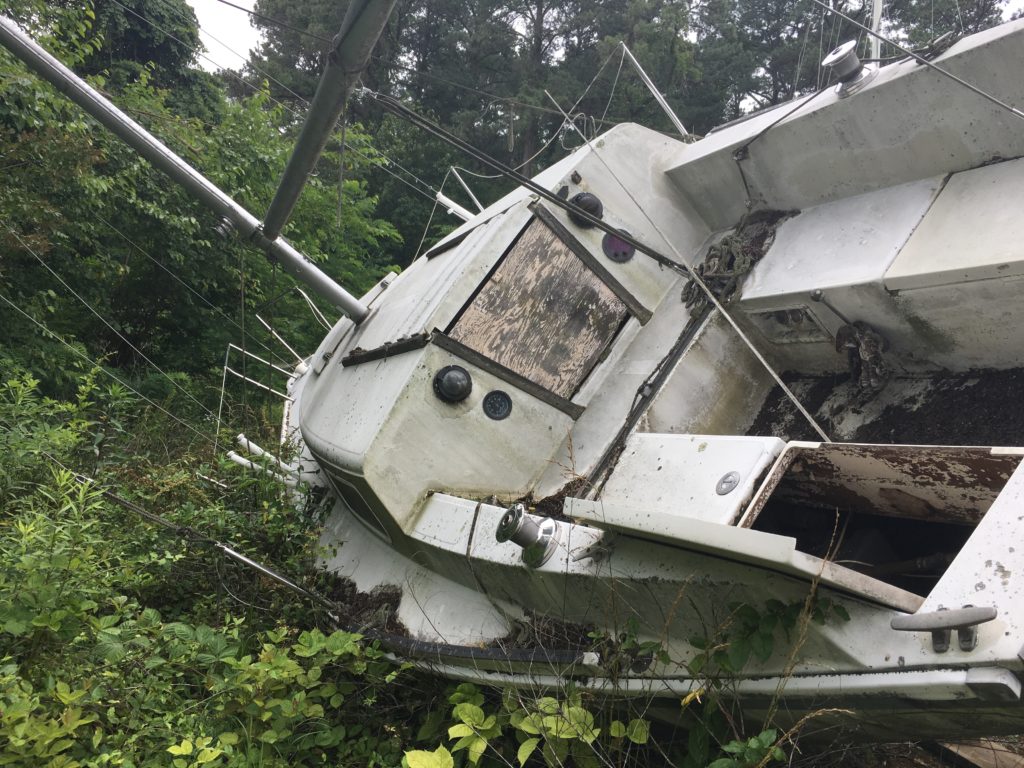
Photo by Kelsey Bonham
After that first boat, Provost started the Vessel Disposal and Reuse Foundation. “We’re the nonparticipatory fundraising entity. I have relationships with a couple of really down-to-earth people who own marine salvage companies, and they give VDRF the nonprofit rate,” Provost says. So far, VDRF has removed 17 abandoned boats in the Hampton Roads area.
Although abandoning a vessel is a misdemeanor in Virginia, Provost feels that the punishment is misguided. “In my experience, the people that create ADVs fall into five categories. They are typically elderly, have a fixed income or have had a change in their wealth, are physically handicapped, mentally ill, or they’re addicted to substances,” Provost says. “They’re at-risk individuals. They’re not some wealthy guy who’s just trying to be a jerk.” Even if the law is enforced, which it rarely is, “Just because they send someone to jail doesn’t mean they’re going to clean up the boat.” Provost believes a vessel turn-in program that allows boatowners seeking affordable disposal options to surrender their boat to the state would be more appropriate than punishment, save millions in removal costs, and prevent untold environmental damage. He has started a petition to establish one.
Despite Provost’s experiences with state officials, Virginia has come closer to solving the problem of ADVs. In June 2022, the Virginia Coastal Zone Management Program released a report by its Abandoned & Derelict Vessels Work Group. The report detailed years of work by state officials and stakeholders to better understand the issue, and made several policy recommendations, including that the state legislature budget $3 million to the VMRC for abandoned vessel removal. The $3 million was approved, marking the first time the VMRC has ever had funding to achieve its mandate.
Now the work group is collaborating with the VMRC to create an equitable, transparent mechanism to remove abandoned boats throughout Virginia. “You’re constantly balancing speed versus getting it done right,” says Jefferson Flood, a co-author of the report. According to Flood, the first step is removing the highest-priority boats, “the ones that are actively a threat to the environment in the water, in a marsh, leaking fuel, that someone could strike at night.” The work group identified approximately 230 known ADVs in Virginia, but “we know that they are so under-reported, and there are probably a ton on private property. So maybe you have twenty more, maybe you have a hundred,” Flood explains. “I would say the plurality, probably 25 to 30 percent of all these vessels, are in southside Hampton Roads. The next biggest concentration is probably on the Middle Peninsula, the Piankatank, Mobjack.” These hotspots, and those vessels in the worst condition, will likely be the first to be targeted by the VMRC.
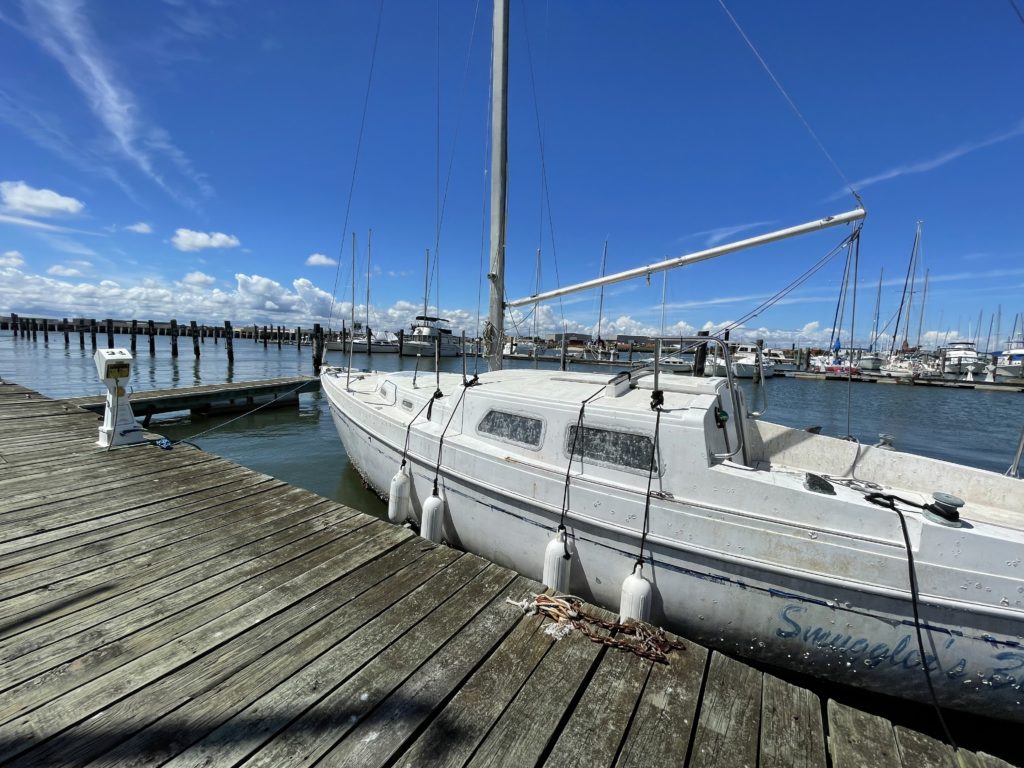
Photo courtesy of Vessel Disposal and Reuse Foundation/Mike Provost
Flood says that they’re still working on what to do after the $3 million runs out to create a robust system for the long term. The work group determined that increasing taxes on boat sales and registrations, as is the case in Maryland, is not politically feasible. “Everyone benefits from cleaner waters and safety of navigation, even if they’re not a boater,” Flood says, so they don’t want to disproportionately tax boaters when only a tiny percentage of them contribute to the problem.
Regarding the possibility of a vessel turn-in program, Flood explains that the work group sees it as an option down the road. “If we demonstrate that the money was well spent, then you’re going to probably see a request for more funding to turn off the faucet by having a vessel turn-in program.”
Abandoned vessels are a complex problem. Robin Dunbar from the Elizabeth River Project went so far as to describe them as a “wicked problem,” a policy term used to describe social dilemmas that have no singular solution and defy standard approaches. “It seems so simple to say, ‘I want this boat out of my backyard,’” Flood adds, and yet, “It is like layers of an onion. You’re peeling them back, and you find out even more stuff that you don’t know.” But the layers are being peeled back. Creatives like Corder are keeping boats out of the landfill, community leaders like Provost are raising awareness and pulling boats from the water, and the state mechanism is in motion to create sustainable change. The problem won’t be solved overnight, not without more effective ways to recycle fiberglass or alternative boatbuilding materials, but for the first time in Virginia’s history, there may be fewer abandoned boats littering waterways a decade from now than there were a decade ago.
Abandoned boats can be hazardous to the environment as well
as navigation.
In Virginia, go to https://docs.google.com/forms/d/e/1FAIpQLSd4WWq5Ik66l_ylupZBwJA8bRWguUUJvqwnznrYk_6U19zPRA/viewform to report abandoned vessels:
In Maryland, report abandoned vessels to the Natural Resources Police at 410-260-8888. Nationwide, if you see a sunken vessel leaking fuel or other pollutants, or if you see an oil slick or smell the odor of spilled fuel, call the National Response Center at 800-424-8802.
Kelsey Bonham is a 2022 graduate of Colgate University with a bachelor’s in Environmental Geography, and is currently based in Norfolk, Va. When not writing or sailing, she is an environmental educator with the Virginia Aquarium & Marine Science Center.

